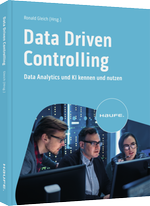Founded in 1957, MOL Group is a leading player in fuel and convenience retail across Central and Eastern Europe. With thousands of employees working globally, the company is focused on evolving from a traditional fuel retailer into a customer-centric retailer offering digital, sustainable, and mobility-focused services. Data and AI have become critical enablers of this strategic shift.
From Fuel to Experience: Redefining the Retail Vision
In 2017, MOL began its digital transformation with a clear goal: move beyond fuel to become a convenience retail and mobility brand. The company envisioned itself as a comprehensive mobility service provider, investing in electric charging, car-sharing solutions, and an enhanced customer experience. A key enabler of this shift was the creation of the "Data Factory" — a dedicated unit bringing together data analytics, engineering, product management and business strategy, led by Istvan Mag.
Breaking Down Silos and Scaling Capabilities
At the start of the transformation, MOL faced a familiar challenge: siloed data, no real analytics infrastructure, and a complete lack of AI experience. Since then, the company has built an analytics platform with over 1,000 internal users and more than 300,000 dashboard views annually. Salesforce now powers customer engagement and loyalty programs, reaching over 5 million mobile app users.
The AI Journey: From Descriptive to Prescriptive
MOL’s AI journey started in 2018 with small-scale proof-of-concept projects. The company initially focused on descriptive analytics, gradually expanding to diagnostic, predictive, and prescriptive approaches as data maturity and organizational readiness improved.
Real-World Use Cases
One standout use case: the Hot Dog Production Planner. Leveraging AI-powered forecasting models, the system predicts the optimal number of hot dogs to prepare per hour in each store — minimizing waste and wait time. Data scientists build the model in Databricks, while sales and operations employees can fine-tune recommendations by ±10–15% to suit local needs.
Another case: personalized marketing. Customer purchasing data is analyzed to create tailored offers and optimize campaign effectiveness. Early results show that AI-powered personalization delivers 2–3 times higher return on investment compared to traditional campaigns.
A Platform for the Future
MOL is building out its loyalty app and data platform to enable more services, deeper customer relationships, and better business decisions. By embracing AI and data as core assets, the company is transforming both its internal operations and the customer experience.
Key Takeaways: Digital Mindset, Scalable Technology, Real Impact
MOL’s journey shows how even a traditional industry player can use AI and data to fuel innovation. With clear vision, strong leadership, and the right infrastructure, the company is laying the foundation for customer-centric growth — setting a compelling example for the future of retail.







